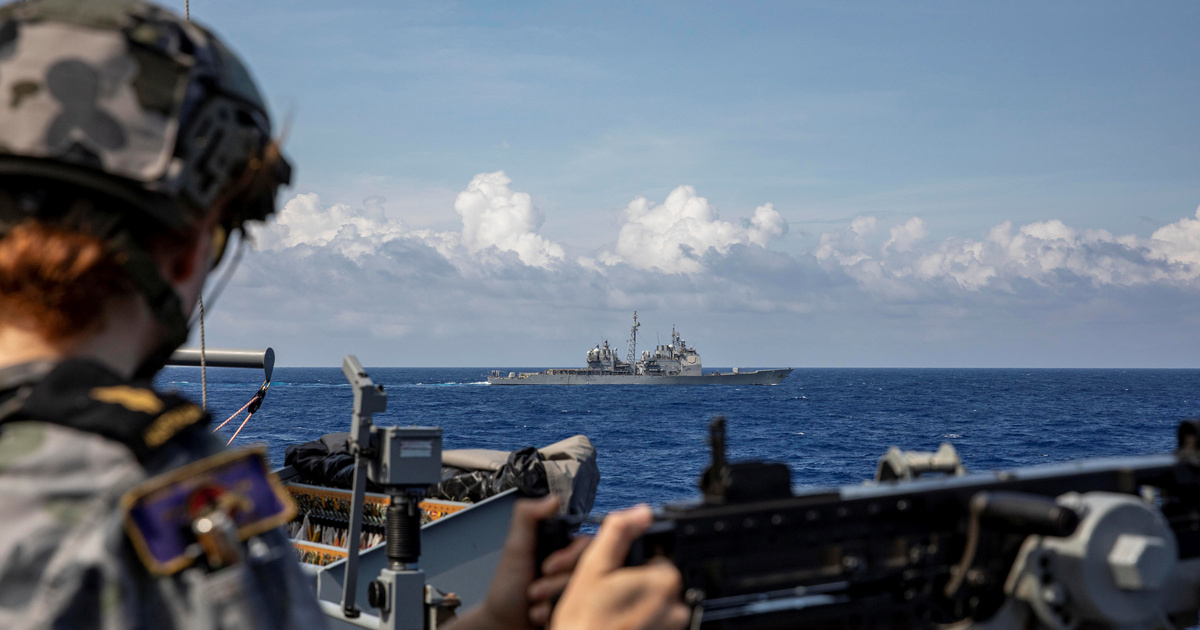“Rising tensions in the South China Sea: Navigating territorial disputes.”
The South China Sea has been a region of rising tensions and territorial disputes in recent years. This area, located in the western Pacific Ocean, is surrounded by several countries including China, Vietnam, the Philippines, Malaysia, Brunei, and Taiwan. These nations have competing claims over various islands, reefs, and waters within the South China Sea, leading to ongoing conflicts and diplomatic challenges. The disputes primarily revolve around issues of sovereignty, control over resources, and freedom of navigation, making the South China Sea a complex and contentious geopolitical hotspot.
Historical Background of Territorial Disputes in the South China Sea
The South China Sea has long been a hotbed of territorial disputes, with multiple countries claiming ownership over various islands and maritime territories. These disputes have led to rising tensions in the region, as each country seeks to assert its sovereignty and protect its interests. To understand the current situation, it is important to delve into the historical background of these territorial disputes.
The roots of the territorial disputes in the South China Sea can be traced back to the early 20th century when several countries, including China, Vietnam, the Philippines, and Malaysia, began asserting their claims over the islands and waters in the region. The main point of contention lies in the conflicting interpretations of historical records and international law regarding the ownership of these territories.
China, for instance, claims historical rights over the South China Sea based on its interpretation of ancient maps and documents that depict Chinese presence in the region dating back centuries. This claim is further supported by the fact that China has historically exercised control over some of the islands and reefs in the South China Sea.
On the other hand, Vietnam, the Philippines, and Malaysia also assert their historical rights over certain islands and waters in the South China Sea. They argue that their respective countries have occupied and administered these territories for centuries, long before China’s claims came into play.
The United Nations Convention on the Law of the Sea (UNCLOS) has been instrumental in shaping the discourse surrounding the territorial disputes in the South China Sea. UNCLOS, which came into force in 1994, provides a legal framework for the rights and responsibilities of states in their use of the world’s oceans. It establishes guidelines for the delimitation of maritime boundaries and the exploitation of marine resources.
However, despite the existence of UNCLOS, the territorial disputes in the South China Sea have remained unresolved. This is primarily due to the fact that not all countries involved in the disputes are signatories to UNCLOS, and even those that are have differing interpretations of its provisions.
In recent years, tensions in the South China Sea have escalated as China has become more assertive in its claims. China has undertaken massive land reclamation projects, transforming reefs and shoals into artificial islands capable of hosting military installations. This has raised concerns among neighboring countries and the international community, who view China’s actions as a threat to regional stability and freedom of navigation.
The territorial disputes in the South China Sea have far-reaching implications for the countries involved and the wider international community. The region is a vital shipping route, with trillions of dollars’ worth of trade passing through its waters each year. Any disruption to this flow of commerce could have severe economic consequences.
Furthermore, the South China Sea is rich in natural resources, including oil, gas, and fisheries. The ownership of these resources is a major point of contention, as countries vie for control over the potentially lucrative reserves.
In conclusion, the historical background of territorial disputes in the South China Sea reveals a complex web of conflicting claims and interpretations. The failure to resolve these disputes has led to rising tensions in the region, with potential implications for regional stability and global trade. It is crucial for all parties involved to engage in peaceful dialogue and adhere to international law in order to find a mutually acceptable solution to the territorial disputes in the South China Sea.
Key Players and their Interests in the South China Sea
The South China Sea has long been a hotbed of territorial disputes, with multiple countries claiming ownership over various islands and waters in the region. These disputes have led to rising tensions and have become a significant concern for the international community. In order to understand the complexities of the situation, it is crucial to examine the key players involved and their interests in the South China Sea.
China, undoubtedly, is the most prominent player in the region. The country claims sovereignty over almost the entire South China Sea, based on historical records dating back centuries. China’s interests in the area are multifaceted. Firstly, the South China Sea is rich in natural resources, including oil and gas reserves, which are vital for China’s growing energy needs. Additionally, the sea serves as a crucial trade route, with a significant portion of global trade passing through its waters. By asserting control over the South China Sea, China aims to secure its energy supplies and maintain its economic dominance in the region.
Vietnam is another key player in the South China Sea disputes. The country has a long history of contesting China’s claims and has actively sought to protect its own interests in the region. Vietnam’s primary concern is the potential loss of its exclusive economic zone (EEZ) and the resources within it. The country relies heavily on fishing and offshore oil exploration in the South China Sea, and any encroachment by China threatens its economic livelihood. Moreover, Vietnam has historical ties to the Paracel and Spratly Islands, which are at the center of the territorial disputes, further fueling its determination to defend its claims.
The Philippines, too, has a significant stake in the South China Sea. The country has overlapping claims with China over the Spratly Islands and Scarborough Shoal. Like Vietnam, the Philippines relies on the sea for fishing and natural resources. Additionally, the South China Sea is of strategic importance to the Philippines due to its proximity to major shipping lanes and its potential for offshore oil and gas exploration. The Philippines has taken a more diplomatic approach to the disputes, seeking resolution through international arbitration and alliances with other countries in the region.
Other countries, such as Malaysia and Brunei, also have territorial claims in the South China Sea, albeit on a smaller scale compared to China, Vietnam, and the Philippines. Malaysia’s interests lie primarily in the Spratly Islands, where it has established a military presence to protect its claims. Brunei, on the other hand, has a dispute with China over Louisa Reef, which is located within Brunei’s EEZ. Both countries are concerned about maintaining their sovereignty and access to the resources within their respective claimed areas.
The United States, although not a claimant in the territorial disputes, has a vested interest in the South China Sea. The U.S. has consistently advocated for freedom of navigation and peaceful resolution of the disputes, as any escalation could disrupt regional stability and impact its own economic and security interests. The U.S. Navy regularly conducts freedom of navigation operations in the area to challenge China’s excessive maritime claims and ensure the freedom of movement for all nations.
In conclusion, the South China Sea disputes involve multiple key players with diverse interests. China’s assertiveness in claiming sovereignty over the entire region has raised tensions and concerns among neighboring countries and the international community. Vietnam, the Philippines, Malaysia, and Brunei all have their own claims and interests in the area, ranging from economic resources to strategic importance. The United States, while not a claimant, plays a crucial role in maintaining regional stability and advocating for peaceful resolution. The complex web of interests and competing claims makes the South China Sea a highly volatile and contentious region.
Implications of Rising Tensions in the South China Sea for Regional Security
The rising tensions in the South China Sea have significant implications for regional security. This disputed region, which is home to valuable resources and vital shipping lanes, has become a hotbed of territorial disputes between several countries. The competing claims over the South China Sea have led to increased military presence, heightened rhetoric, and a growing sense of unease among neighboring nations.
One of the key implications of the rising tensions in the South China Sea is the potential for armed conflict. As countries assert their claims and defend their interests, the risk of clashes between military forces increases. The presence of naval vessels and aircraft in the region has already led to several close encounters and near-misses, raising concerns about the possibility of accidental escalation. Any armed conflict in the South China Sea would have far-reaching consequences for regional security and stability.
Another implication of the rising tensions is the strain it puts on diplomatic relations between countries in the region. The competing claims over the South China Sea have strained bilateral and multilateral relationships, making it difficult for countries to find common ground and resolve their differences peacefully. The lack of trust and cooperation among nations in the region hampers efforts to establish a framework for managing disputes and maintaining stability. This, in turn, creates a fertile ground for further tensions and potential conflicts.
The rising tensions in the South China Sea also have economic implications. The region is a crucial trade route, with a significant portion of global trade passing through its waters. Any disruption to the free flow of goods and resources in the South China Sea would have a detrimental impact on the economies of countries in the region and beyond. The uncertainty surrounding the territorial disputes has already led to increased insurance costs for shipping companies and has the potential to deter foreign investment in the region. The economic consequences of the rising tensions further underscore the need for a peaceful resolution to the disputes.
Furthermore, the rising tensions in the South China Sea have broader implications for regional security dynamics. The involvement of major powers, such as the United States and China, adds an additional layer of complexity to the situation. The United States has been conducting freedom of navigation operations in the region to challenge China’s claims and assert its commitment to maintaining open seas. This has led to a tit-for-tat response from China, further exacerbating tensions. The involvement of major powers in the South China Sea disputes raises concerns about the potential for a proxy conflict or a direct confrontation between these powers, which would have global implications.
In conclusion, the rising tensions in the South China Sea have significant implications for regional security. The potential for armed conflict, strained diplomatic relations, economic consequences, and broader security dynamics all contribute to the growing sense of unease in the region. It is crucial for countries involved in the disputes to find peaceful and diplomatic solutions to their differences in order to maintain stability and security in the South China Sea and beyond. The international community must also play a role in facilitating dialogue and promoting a rules-based order in the region. Only through peaceful resolution can the tensions be eased and the potential for conflict mitigated.In conclusion, rising tensions in the South China Sea and territorial disputes have become a significant concern in recent years. The competing claims over the region’s resources, strategic importance, and maritime boundaries have led to increased military presence, diplomatic conflicts, and potential risks of escalation. The involvement of multiple countries, including China, Vietnam, the Philippines, and others, has further complicated the situation. Resolving these disputes and ensuring stability in the South China Sea remains a crucial challenge for regional security and international cooperation.




